Richard Conti
age ~57
from Woodstock, NY
- Also known as:
-
- Rick Conti
- Dick Conti
- Rich Couti
- Phone and address:
-
111 Upper Byrdcliffe Rd, Woodstock, NY 12498
8456794475
Richard Conti Phones & Addresses
- 111 Upper Byrdcliffe Rd, Woodstock, NY 12498 • 8456794475
- 5 Calamar Ln, Woodstock, NY 12498 • 8456794630
- Alfred Station, NY
- 5 W Byrdcliffe Rd, Woodstock, NY 12498 • 7184019093
Work
-
Position:Production Occupations
Education
-
Degree:Bachelor's degree or higher
Us Patents
-
Directional Cvd Process With Optimized Etchback
view source -
US Patent:6335261, Jan 1, 2002
-
Filed:May 31, 2000
-
Appl. No.:09/584355
-
Inventors:Wesley Natzle - New Paltz NY
Richard A. Conti - Mount Kisco NY
Laertis Economikos - Wappingers Falls NY
Thomas Ivers - Hopewell Jct. NY
George D. Papasouliotis - Fishkill NY -
Assignee:International Business Machines Corporation - Armonk NY
-
International Classification:H01L 2100
-
US Classification:438435, 438221, 438424, 438685, 438694, 438696, 438758, 438762, 438765, 438775, 438788
-
Abstract:A method is described for filling a high-aspect-ratio feature, in which compatible deposition and etching steps are performed in a sequence. The feature is formed as an opening in a substrate having a surface; a fill material is deposited at the bottom of the feature and on the surface of the substrate; deposition on the surface adjacent the feature causes formation of an overhang structure partially blocking the opening. The fill material is then reacted with a reactant to form a solid reaction product having a greater specific volume than the fill material. The overhang structure is thus converted into a reaction product structure blocking the opening. The reaction product (including the reaction product structure) is then desorbed, thereby exposing unreacted fill material at the bottom of the feature. The depositing and reacting steps may be repeated, with a final depositing step to fill the feature. Each sequence of depositing, reacting and desorbing reduces the aspect ratio of the feature.
-
Method For Forming Damascene Structure Utilizing Planarizing Material Coupled With Compressive Diffusion Barrier Material
view source -
US Patent:7326651, Feb 5, 2008
-
Filed:Dec 14, 2004
-
Appl. No.:10/905068
-
Inventors:Heidi Baks - Poughkeepsie NY, US
Richard A. Bruff - Wappingers Falls NY, US
Richard A. Conti - Katonah NY, US
Allan Upham - Wappingers Falls NY, US -
Assignee:International Business Machines Corporation - Armonk NY
-
International Classification:H01L 21/302
-
US Classification:438706, 438704, 438717, 438725, 438736, 438694, 438696
-
Abstract:This invention relates to the manufacture of dual damascene interconnect structures in integrated circuit devices. Specifically, a method is disclosed for forming a single or dual damascene structure in a low-k dielectric thin film utilizing a planarizing material and a compressive diffusion barrier material. The barrier material preferably has a compressive stress of greater than 300 MPa. In a preferred dual damascene embodiment of this method, the vias are formed first in the dielectric material, then the planarizing material is deposited in the vias and on the dielectric material, and the barrier material is deposited on the planarizing material. The trenches are then formed lithographically in the imaging material, etched through the barrier material into the planarizing material, and the trench pattern is transferred to the dielectric material. During and following the course of these etch steps, the imaging, barrier and planarizing materials are removed. The resultant dual damascene structure may then be metallized.
-
Structure And Method To Control Oxidation In High-K Gate Structures
view source -
US Patent:7955926, Jun 7, 2011
-
Filed:Mar 26, 2008
-
Appl. No.:12/055682
-
Inventors:Wesley C. Natzle - New Paltz NY, US
Renee T. Mo - Briarcliff Manor NY, US
Rashmi Jha - Wappingers Falls NY, US
Kathryn T. Schonenberg - Wappingers Falls NY, US
Richard A. Conti - Katonah NY, US -
Assignee:International Business Machines Corporation - Armonk NY
-
International Classification:H01L 21/00
-
US Classification:438240, 438197, 257310, 257544
-
Abstract:In one embodiment, the present invention provides a method of fabricating a semiconducting device that includes providing a substrate including at least one semiconducting region and at least one oxygen source region; forming an oxygen barrier material atop portions of an upper surface of the at least one oxygen region; forming a high-k gate dielectric on the substrate including the at least one semiconducting region, wherein oxygen barrier material separates the high-k gate dielectric from the at least one oxygen source material; and forming a gate conductor atop the high-k gate dielectric.
-
Dual Sidewall Spacer For Seam Protection Of A Patterned Structure
view source -
US Patent:20110241085, Oct 6, 2011
-
Filed:Mar 31, 2010
-
Appl. No.:12/751891
-
Inventors:David L. O'Meara - Poughkeepsie NY, US
Anthony Dip - Cedar Creek TX, US
Aelan Mosden - Poughkeepsie NY, US
Pao-Hwa Chou - Kofu-city, JP
Richard A. Conti - Katonah NY, US -
Assignee:TOKYO ELECTRON LIMITED - Tokyo
INTERNATIONAL BUSINESS MACHINES CORPORATION - Armonk NY -
International Classification:H01L 29/78
H01L 21/311 -
US Classification:257288, 438696, 257E21249, 257E29255
-
Abstract:A semiconducting device with a dual sidewall spacer and method of forming are provided. The method includes: depositing a first spacer layer over a patterned structure, the first spacer layer having a seam propagating through a thickness of the first spacer layer near an interface region of a surface of the substrate and a sidewall of the patterned structure, etching the first spacer layer to form a residual spacer at the interface region, where the residual spacer coats less than the entirety of the sidewall of the patterned structure, depositing a second spacer layer on the residual spacer and on the sidewall of the patterned structure not coated by the residual spacer, the second spacer layer being seam-free on the seam of the residual spacer, and etching the second spacer layer to form a second spacer coating the residual spacer and coating the sidewall of the patterned structure not coated by the residual spacer.
-
Multilayer Sidewall Spacer For Seam Protection Of A Patterned Structure
view source -
US Patent:20110241128, Oct 6, 2011
-
Filed:Mar 31, 2010
-
Appl. No.:12/751926
-
Inventors:David L. O'Meara - Poughkeepsie NY, US
Anthony Dip - Cedar Creek TX, US
Aelan Mosden - Poughkeepsie NY, US
Pao-Hwa Chou - Kofu-city, JP
Richard A. Conti - Katonah NY, US -
Assignee:TOKYO ELECTRON LIMITED - Tokyo
INTERNATIONAL BUSINESS MACHINES CORPORATION - Armonk NY -
International Classification:H01L 29/78
H01L 21/336 -
US Classification:257408, 438299, 257E21409, 257E29255
-
Abstract:A semiconducting device with a multilayer sidewall spacer and method of forming are described. In one embodiment, the method includes providing a substrate containing a patterned structure on a surface of the substrate and depositing a first spacer layer over the patterned structure at a first substrate temperature, where the first spacer layer contains a first material. The method further includes depositing a second spacer layer over the patterned substrate at a second substrate temperature that is different from the first substrate temperature, where the first and second materials contain the same chemical elements, and the depositing steps are performed in any order. The first and second spacer layers are then etched to form the multilayer sidewall spacer on the patterned structure.
-
Safe Method For Etching Silicon Dioxide
view source -
US Patent:52680690, Dec 7, 1993
-
Filed:Jun 8, 1992
-
Appl. No.:7/895493
-
Inventors:Jonathan D. Chapple-Sokol - Poughkeepsie NY
Richard A. Conti - Mount Kisco NY
David E. Kotecki - Hopewell Junction NY
Andrew H. Simon - Fishkill NY
Manu Tejwani - Yorktown Heights NY -
Assignee:International Business Machines Corporation - Armonk NY
-
International Classification:H01L 2100
-
US Classification:156646
-
Abstract:Anhydrous ammonium fluoride is used as a safe source of hydrogen fluoride for etching native or other silicon dioxide layers from silicon substrates. Heating the anhydrous ammonium fluoride above its sublimation temperature results in the generation of hydrogen fluoride gas which etches the silicon dioxide. Controlled amounts of water vapor are used during the etch reaction to ensure complete etching of the thin oxide layers down to within hundredths of a monolayer and to achieve precise etch rate control.
Resumes

Richard Conti
view source
Richard Conti
view source
Richard Conti
view sourceSkills:
Management
Customer Service
Customer Service

Richard Conti
view source
Richard Conti
view source
Richard Conti
view source
Richard Conti
view sourceLocation:
United States
Name / Title
Company / Classification
Phones & Addresses
SYDNEY CANDLE COMPANY, LLC
WESTERSUN, LLC
Wikipedia References

Richard Conti
Work:
Position:
Judge
Education:
Studied at:
North Sydney Boys High School
Medicine Doctors

Richard J. Conti
view sourceSpecialties:
Podiatric Medicine
Work:
Foot & Ankle AssociatesFoot & Ankle Associates LLP
1440 Conchester Hwy STE 10C, Garnet Valley, PA 19060
6104593288 (phone), 6104593318 (fax)
Foot & Ankle Associates
685 Unionville Rd STE 2, Kennett Square, PA 19348
6104446520 (phone), 6104442232 (fax)
Foot & Ankle Associates
1 Commerce Blvd STE 102, West Grove, PA 19390
6103450222 (phone), 6103451148 (fax)
Foot & Ankle Associates
4923 Ogletown Stanton Rd STE 120, Newark, DE 19713
3026331300 (phone), 3026334623 (fax)
1440 Conchester Hwy STE 10C, Garnet Valley, PA 19060
6104593288 (phone), 6104593318 (fax)
Foot & Ankle Associates
685 Unionville Rd STE 2, Kennett Square, PA 19348
6104446520 (phone), 6104442232 (fax)
Foot & Ankle Associates
1 Commerce Blvd STE 102, West Grove, PA 19390
6103450222 (phone), 6103451148 (fax)
Foot & Ankle Associates
4923 Ogletown Stanton Rd STE 120, Newark, DE 19713
3026331300 (phone), 3026334623 (fax)
Procedures:
Arthrocentesis
Hallux Valgus Repair
Hallux Valgus Repair
Conditions:
Plantar Fascitis
Hallux Valgus
Tinea Pedis
Hallux Valgus
Tinea Pedis
Languages:
English
Spanish
Spanish
Description:
Dr. Conti works in Boothwyn, PA and 3 other locations and specializes in Podiatric Medicine. Dr. Conti is affiliated with Christiana Hospital, Crozer Chester Medical Center, Jennersville Regional Hospital and Penn Medicine Chester County Hospital.

Richard Conti
view source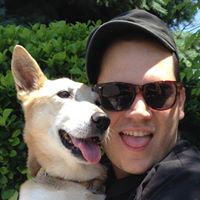
Richard Conti
view source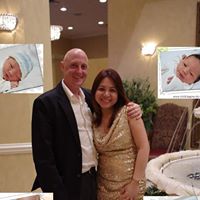
Richard Conti
view source
Richard Conti
view source
Richard Conti
view source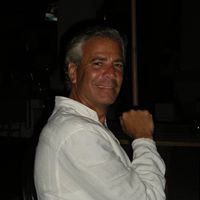
Richard Conti
view source
Richard Joseph Conti
view source
Richard J. Conti
view sourceMyspace
Googleplus

Richard Conti
Education:
San Diego State University - Multimedia Art
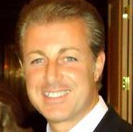
Richard Conti
Work:
R66T Digital Networks / Onsite Concierge - Director of Convention Operations
Relationship:
Married

Richard Conti

Richard Conti

Richard Conti
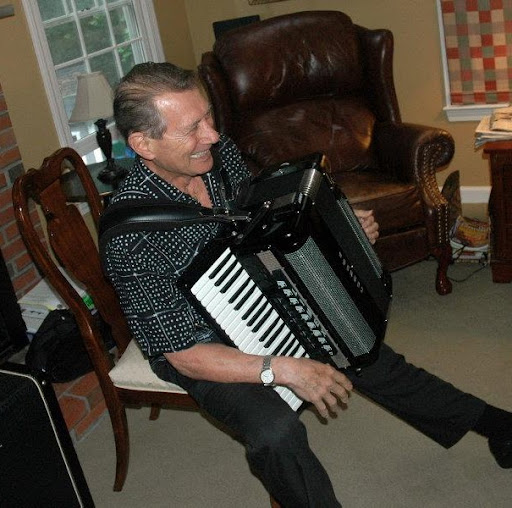
Richard Conti

Richard Conti

Richard Conti
Flickr
Youtube
Classmates

Richard Conti
view sourceSchools:
Lincoln Junior High School Brooklyn NY 1972-1976
Community:
Brian Chichi, Lynda Maggiore

Richard Conti
view sourceSchools:
Lincoln Elementary School Brookfield IL 1986-1991
Community:
Susan Marion, Maryann Kral, Jennifer Marine, Merlissa Ramos, Barbara Davis

Richard Conti
view sourceSchools:
Brown Middle School Bergenfield NJ 1962-1963
Community:
Gary Peraino, Karen Hotchkiss, Philip Osoff, Joe May

Richard Conti
view sourceSchools:
Our Lady of Mt. Carmel St. Benedicta School Staten Island NY 1961-1969
Community:
Bob Fannin, Patrick Groves, Kelli Stannard

Richard Conti
view sourceSchools:
Canajoharie Central High School Canajoharie NY 1965-1969
Community:
Barbara Fonda

Richard Conti
view sourceSchools:
St. Joachim Elementary School Trenton NJ 1961-1967, Nottingham Junior High School Hamilton NJ 1968-1970
Community:
Susann Minall, Cheryl Ferrara, Michelle Ferrara, James Csira, Carmel Valvo, Ronald Warren, David Lichen

Richard Conti
view sourceSchools:
Warren High School Warren RI 1987-1991
Community:
Mary Jones, Diane Borges, Jimmy Bermudez, Jennifer Blouin, J Brown, Kevin M, Jennifer Souza, Christine Pullen, Michael Escobar, Adilia Dasilva, Crystal Fortier
Get Report for Richard Conti from Woodstock, NY, age ~57













